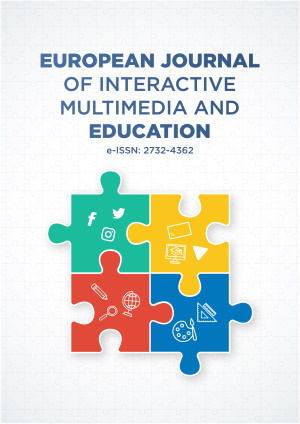Research Article
Blended, Distance, Electronic and Virtual-Learning for the New Normal of Mathematics Education: A Senior High School Student’s Perception
More Detail
1 STI College – Global City, Taguig City, PHILIPPINES* Corresponding Author
European Journal of Interactive Multimedia and Education, 1(1), January 2020, e02001, https://doi.org/10.30935/ejimed/8276
Published: 17 May 2020
OPEN ACCESS 25761 Views 24075 Downloads
ABSTRACT
This study examines the perception of the senior high school students on blended, distance, electronic and virtual learning as a new way of delivering lessons for the following school year due to the existing threat of CoViD-19. A random sample of 342 senior high school students of different strands from STI College Global City served as the sample of this study. Data were collected through a self-administered survey questionnaire sent through a google form to comply with the existing lockdown policies of the government. The result indicates that the subjects’ perception on the effectivity of online learning and their capability to attend the e-learning sessions is independent of their life style and available e-learning tools despite the result analysis of variance showing that their perceived mathematical capability are significantly different.
CITATION (APA)
Cortez, C. P. (2020). Blended, Distance, Electronic and Virtual-Learning for the New Normal of Mathematics Education: A Senior High School Student’s Perception. European Journal of Interactive Multimedia and Education, 1(1), e02001. https://doi.org/10.30935/ejimed/8276
REFERENCES
- Chantel, R. G. (2002). New technology, new literacy: Creating a bridge for English language learners. New England Reading Association Journal, 38(3), 45.
- Garcia, M. (2017). E-Learning Technology Adoption in the Philippines: An Investigation of Factors Affecting Filipino College Students’ Acceptance of Learning Management Systems. The International Journal of E-Learning and Educational Technologies in the Digital Media (IJEETDM), 3(3), 118-130. https://doi.org/10.17781/P002374
- Hansen, J. D., & Reich, J. (2015). Democratizing education? Examining access and usage patterns in massive open online courses. Science, 350(6265), 1245-1248. https://doi.org/10.1126/science.aab3782
- Harris, S. (2017). 5 Things To Consider When Shifting From Classroom Training To eLearning. eLearning Industry. Retrieved from https://elearningindustry.com/classroom-training-to-elearning-5-things-consider-shifting
- Hassan, H., Hassan, F., Zakaria, Z., & Nor, W. A. W. M. (2012) Evaluating Mathematics e-Learning Materials: Do evaluators agree with distance learners? Procedia - Social and Behavioral Sciences, 67, 189-195. https://doi.org/10.1016/j.sbspro.2012.11.320
- Hubackova, S. (2015). E-learning in English and German language teaching. Procedia - Social and Behavioral Sciences, 199(2015), 525-529. https://doi.org/10.1016/j.sbspro.2015.07.542
- LeLoup, J. W., & Ponterio, R. (2000). On the Net: Foreign Language Teacher Resources. Language Learning and Technology, 6-9.
- Trung, N. T., Thu, T. T. L., & Tan, L. M. (2012). Replacing Face-To-Face Classes by Synchronous Online Technologies: The HOU Experience. Procedia - Social and Behavioral Sciences, 67, 386-392. https://doi.org/10.1016/j.sbspro.2012.11.342
- Villanti, A. C., Johnson, A. L., Ilakkuvan, V., Jacobs, M. A., Graham, A. L., & Rath, J. M. (2017). Social Media Use and Access to Digital Technology in US Young Adults in 2016. Journal of Medical Internet Research, 19(6), e196. https://doi.org/10.2196/jmir.7303
- Zamari, Z. M., Adnan, A. H. M., Idris, S. L., & Yusof, J. (2012). Students’ Perception of Using Online Language Learning Materials. Procedia - Social and Behavioral Sciences, 611-620. https://doi.org/10.1016/j.sbspro.2012.11.367

 The articles published in this journal are licensed under the CC-BY Creative Commons Attribution International License.
The articles published in this journal are licensed under the CC-BY Creative Commons Attribution International License.